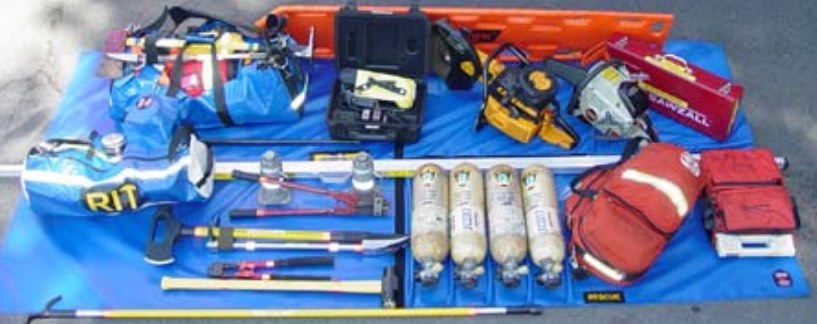Two nights ago I received an alert on my cell phone.

It’s pretty rare to receive an alert at almost midnight. Especially for a “FAST MOVING BRUSH FIRE.”
I was already in bed asleep when my phone started to freak out, flashing and buzzing. When I looked closely at the alert, it said it was for the Santa Paula, Ojai, Ventura area.
My house is located about 30 miles from there, so I wasn’t too concerned. I just went back to sleep.
I woke up the next morning at around 6am – about 6 hours after that alert was sent. When I checked the local news, I was surprised to see the destruction that had happened in those short six hours.
The fire spread rapidly and was up to 45,000 acres that morning (right now, the fire is more than 65,000 acres, which is more than 100 square miles). We’re talking major destruction with hundreds of homes burned and people’s lives turned upside down.
For those people who lost their homes, they had almost no warning. With wind speeds gusting over 80 miles per hour, the fire was spreading faster than you can imagine.
Today, there are a couple more brush fires in the area. In fact, look at what the weather says:

I used to be a firefighter in Los Angeles, so I have a bit of insight into what’s going on.
Many people think that firefighters have an exact plan when it comes to actually fighting fires.
This is 100% true, but it’s not in the way you might think.
The ‘plan’ is not a straight line with a beginning and an end.
It’s more of an enormous algorithm where you must react to what’s given to you.
“If this, then that.”
If this happens… then we do that. It’s very reactionary to the circumstances that are presented.
The key is how you react (your actions) and what you react with (your equipment and resources).
Most importantly, it’s how you prepare to deploy these reactions.
Let me explain how a house fire works…
When someone calls 911 to report a structure fire, the fire department is dispatched.
Typically, that means a ‘full assignment’ is sent to the fire. Every fire department is a bit different, but essentially a bunch of fire engines and trucks are sent to the fire.
Usually the first fire engine on scene is “fire attack,” the second fire engine on scene is “back up fire attack,” the first fire truck on scene is “ventilation,” and the third fire engine on scene is “RIC.”
(Fire engines = have hose and pump water. Fire trucks = have aerial ladder and lots of tools.)
“Fire attack” is pretty self explanatory. Put the wet stuff on the hot stuff.
“RIC” is what is important here… and why I am telling you all of this.
“RIC” is an acronym for Rapid Intervention Crew.
The fire engine that is assigned as RIC has NOTHING to do with putting out the fire. I used to hate being assigned to RIC because as a firefighter you usually want to fight fires. (duh!)
But, being assigned to RIC is probably the most important job of all.
Being a part of the Rapid Intervention Crew means that you are specifically responsible for saving a fellow firefighter if they get injured, trapped, or fall through the roof.
Without RIC in place, a simple house fire can go from bad to MUCH worse.
However… here’s the challenge with RIC: You have no idea what you are going to be doing. When you are assigned RIC you are basically just waiting for something to go wrong… but you have no idea what that “thing” is.
When setting up for RIC at a structure fire you have a RIC cache of equipment.

It consists of chainsaws, rotary saws, lights, rope, sledgehammers, axes, ladders, pike poles, roof hooks, bolt cutters, and all kinds of other equipment.
There is also a RIC bag that is carried into a fire if you need to save a fellow firefighter. The bag has a SCBA (self contained breathing apparatus), rope, lights, extra masks, extra regulators, wire cutters, and other small hand tools.

The RIC team must be ready for literally every scenario possible.
In life, it’s the ‘things’ we DON’T expect that are typically the biggest risk.
That’s the whole reason why we have market crashes.
After all, if we knew what was going to happen in the markets… if we knew what the risks were… then we’d act accordingly.
The only real way to be protected from risk is to prepare for things that you don’t know are coming.
Remember, just like the Rapid Intervention Crew…
The key is how you react (your actions) and what you react with (your equipment and resources).
Most importantly, it’s how you prepare to deploy these reactions.
So, as I look at the market today. I see all the risks that you probably see too.
Here they are, in no particular order:
- Bond bubble
- Auto loan bubble
- Student loan bubble
- Insane FANG stock valuations
And then…. out of nowhere, something that I NEVER would have guessed in a million years becomes a market threat:
Trump Recognizes Jerusalem as Capital of Israel
I don’t think anyone could have guessed this was coming.
Now, I’m not predicting a market crash (although this only adds fuel to the fire in the middle east…). But, it’s these types of market threats that you and I would never think about.
That’s why it’s important to hold your wealth in a variety of different assets and locations.
–
I am excited to share a new travel opportunity with you that will be in early 2018.
It’s one of the best ‘buying when there is blood in the streets’ opportunities I have ever seen. And it’s an excellent way to diversify your wealth into different assets in a different location.




